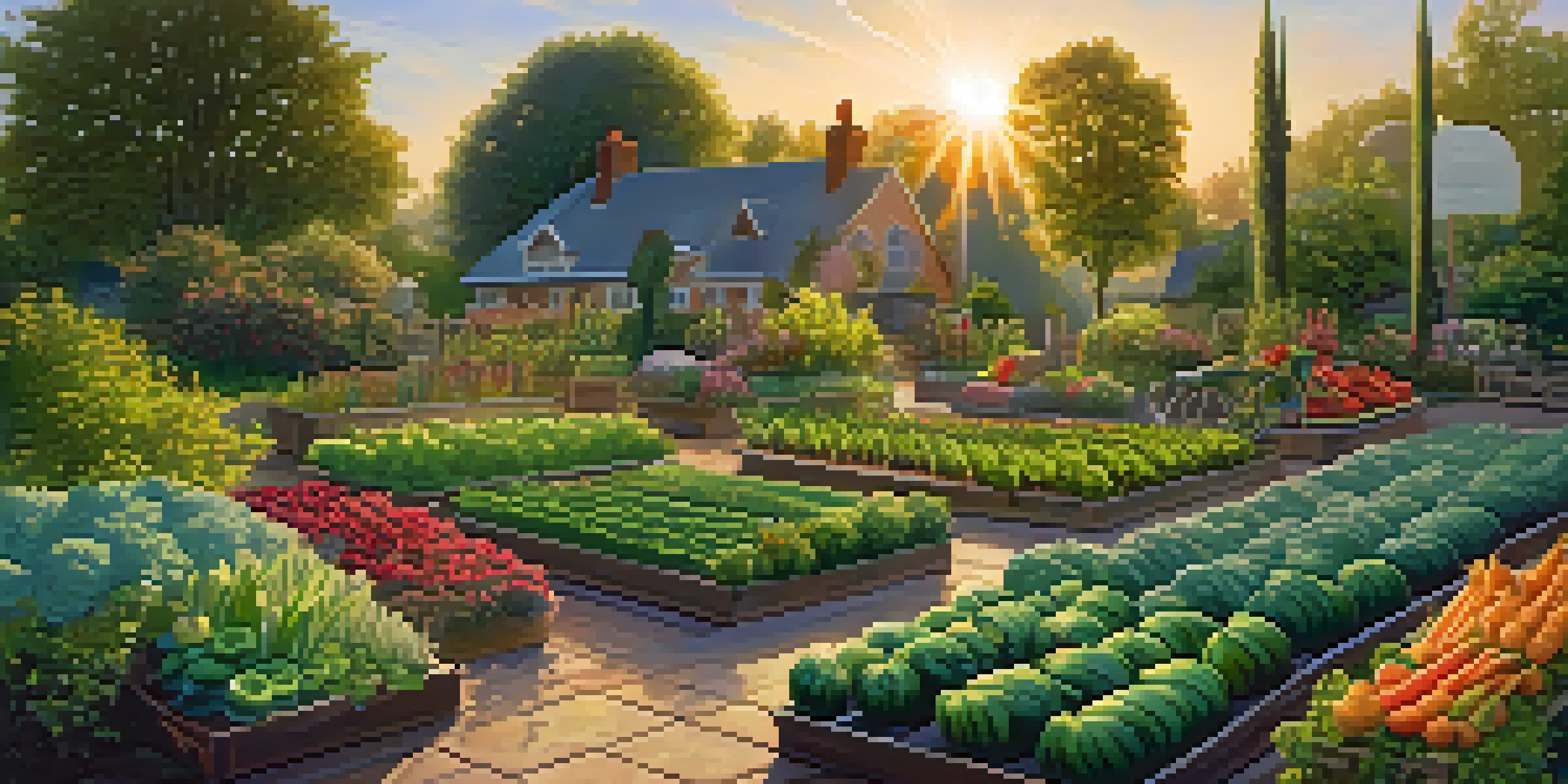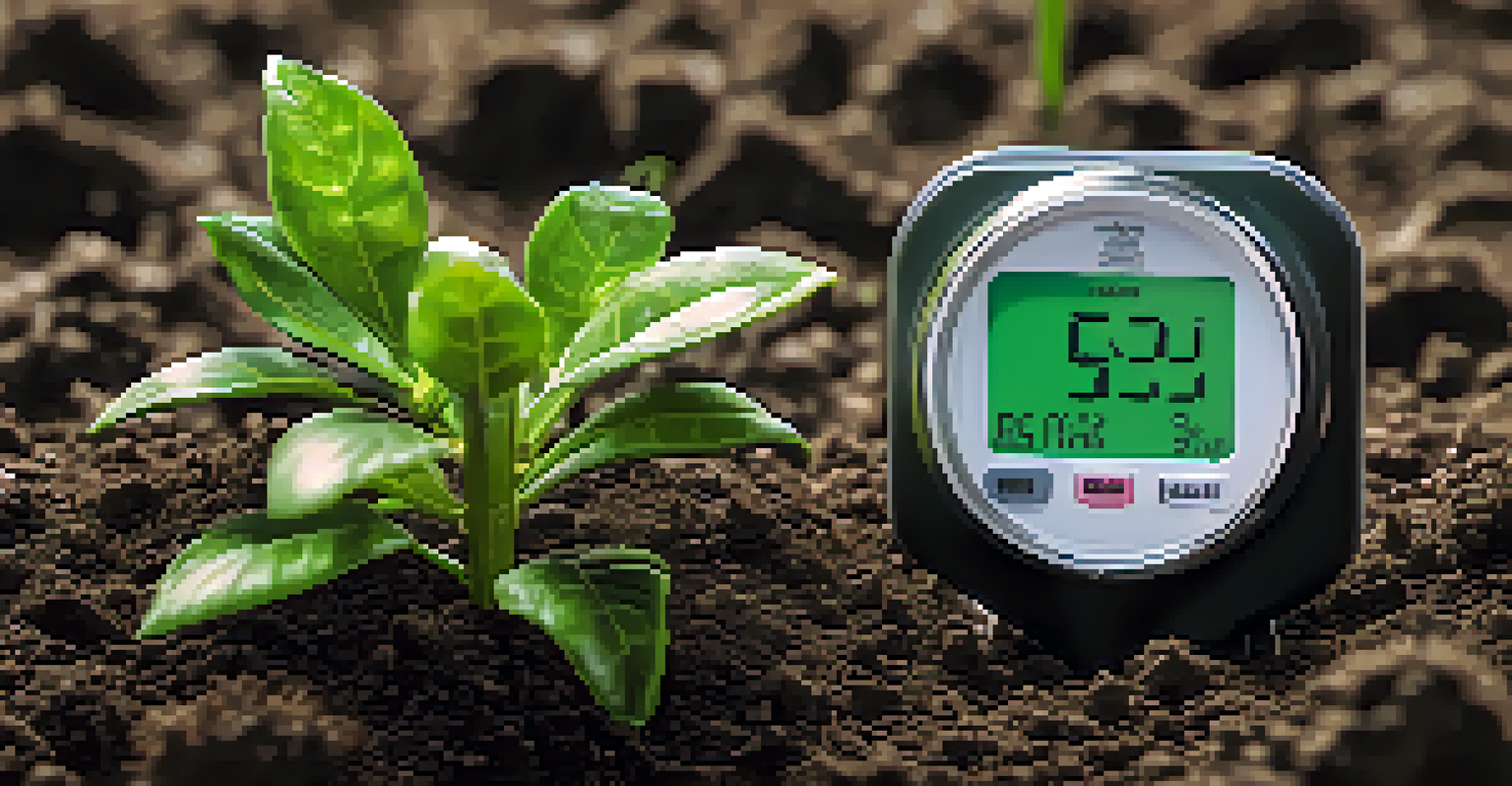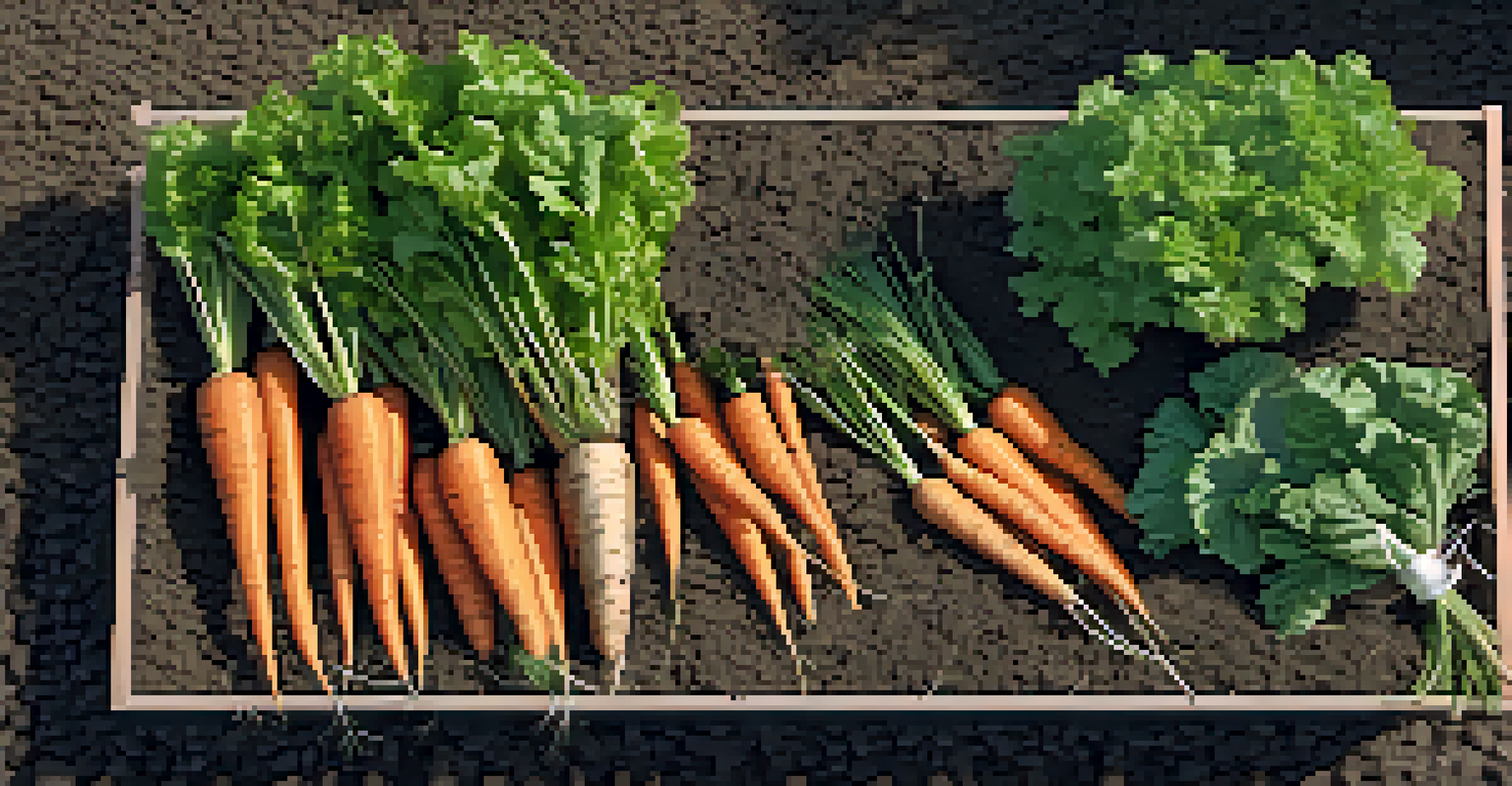Watering Techniques for Healthy Fruits and Vegetables

Understanding the Importance of Proper Watering
Watering is a fundamental aspect of gardening that significantly affects plant health. Just like humans need water to survive, fruits and vegetables rely on it to grow and thrive. Insufficient or excessive watering can lead to issues like root rot or dehydration, which can stunt growth or even kill the plants.
Water is the driving force of all nature.
Moreover, proper watering helps in nutrient absorption, allowing plants to take up essential minerals from the soil. When plants receive the right amount of water, they can transport nutrients effectively, leading to better yields. This balance is crucial for anyone looking to cultivate a productive garden.
Understanding your plants' specific watering needs is the first step toward ensuring their health. Different fruits and vegetables have varying requirements, which can depend on factors like the season, soil type, and climate. This knowledge will empower you to make informed decisions for your garden.
Choosing the Right Watering Method
There are several methods for watering your garden, each with its pros and cons. You can use traditional methods like watering cans or hoses, or opt for more advanced techniques such as drip irrigation or soaker hoses. Each method can be tailored to suit your garden size and layout.

For instance, drip irrigation delivers water directly to the roots, minimizing evaporation and runoff. This is especially beneficial for plants that thrive in drier conditions, ensuring they receive adequate moisture without excess water pooling in unwanted areas. On the other hand, using a watering can allows for greater control and is often more suited for smaller gardens.
Proper Watering is Crucial
Understanding and implementing the right watering techniques significantly impacts plant health and growth.
Ultimately, the best watering method will depend on your garden's specific needs and your personal preferences. Experimenting with different techniques can help you discover what works best, leading to a healthier and more productive garden.
Timing Your Watering for Maximum Effectiveness
When you water your garden can be just as important as how you water it. Early morning is often considered the best time for watering, as it allows plants to absorb moisture before the sun gets too hot. This practice not only helps reduce evaporation but also prepares plants for the day's heat.
The best time to plant a tree was twenty years ago. The second best time is now.
Watering in the evening can also be effective, but it poses the risk of leaving plants damp overnight, which can encourage fungal diseases. Therefore, it's essential to consider both the time and the weather conditions when planning your watering schedule. Keeping an eye on the forecast can help you adjust your routine accordingly.
Additionally, observing your plants can provide valuable insights. If leaves are drooping or turning yellow, it may be a sign they need more water. Conversely, if the soil feels consistently wet, it might be time to cut back. Listening to your garden can lead to healthier plants.
Understanding Soil Moisture Levels
Soil moisture is a key factor in determining how much and how often you should water your plants. Checking soil moisture can be as simple as sticking your finger into the ground; if it feels dry about an inch down, it's time to water. This tactile method can help prevent overwatering, which is a common mistake for many gardeners.
Investing in a moisture meter can also take the guesswork out of watering. These devices provide precise readings of soil moisture levels, allowing you to adjust your watering schedule based on real data. Understanding the moisture levels in your soil can drastically improve your watering efficiency.
Timing Matters for Watering
Watering at the right time, such as early morning, helps maximize moisture absorption and reduces evaporation.
Furthermore, different soil types retain moisture differently. For example, sandy soils drain quickly, while clay soils tend to hold moisture longer. Knowing your soil type will help you tailor your watering practices to suit its unique characteristics.
Adapting to Seasonal Changes in Watering Needs
As the seasons change, so do the watering needs of your garden. During hot summer months, your plants may require more frequent watering due to increased evaporation and transpiration. Conversely, during cooler months or rainy seasons, you may need to reduce your watering frequency to avoid waterlogged soil.
Keeping a close eye on weather patterns can help you anticipate these changes. For instance, if a heatwave is approaching, you might want to water your garden a bit more in advance. On the flip side, if rain is forecasted, you can hold off on watering to prevent over-saturation.
Adapting your watering routine to match seasonal shifts not only ensures your plants receive the right amount of moisture but also promotes better growth and fruiting. It’s a simple yet effective way to keep your garden healthy year-round.
Watering Techniques for Specific Fruits and Vegetables
Different fruits and vegetables have unique watering needs that can significantly affect their growth. For example, tomatoes thrive with consistent moisture but can suffer from blossom end rot if their watering is erratic. On the other hand, root vegetables like carrots and potatoes do best with evenly moist soil throughout their growing period.
Leafy greens, such as lettuce and spinach, prefer more frequent watering, especially in warmer weather. It’s essential to adjust your watering techniques based on the specific requirements of each plant type to maximize yield and quality. Understanding these nuances can lead to a more fruitful harvest.
Mulching Enhances Water Retention
Applying mulch around plants conserves moisture, suppresses weeds, and improves soil quality for better yields.
If you're unsure about the best watering practices for your plants, researching or consulting gardening resources can provide valuable insights. Tailoring your care to meet individual needs will not only improve plant health but also enhance your overall gardening experience.
The Benefits of Mulching for Water Retention
Mulching is a fantastic technique that not only conserves moisture but also suppresses weeds and improves soil quality. By applying a layer of organic material, like straw or wood chips, around your plants, you can significantly reduce evaporation, keeping the soil moist for longer periods. This is especially beneficial during hot summer months when water can quickly evaporate.
Moreover, mulching helps maintain a more consistent soil temperature, which can promote healthier root development. As the mulch breaks down, it also adds nutrients back into the soil, creating a richer environment for your crops. This natural approach can lead to healthier plants and better yields.

Incorporating mulching into your gardening routine is an easy yet effective way to enhance your watering techniques. Not only does it save you time and effort in watering, but it also contributes to a more sustainable gardening practice.